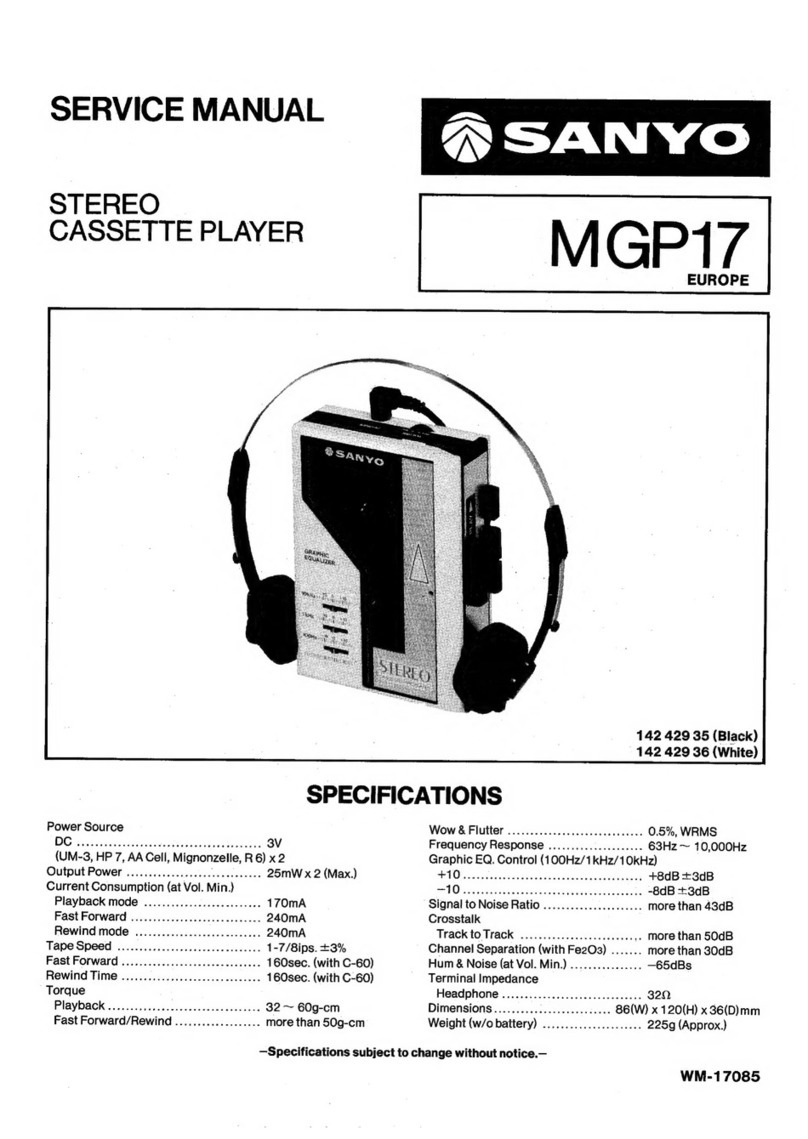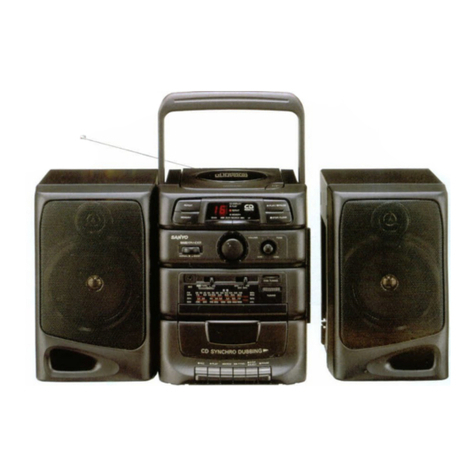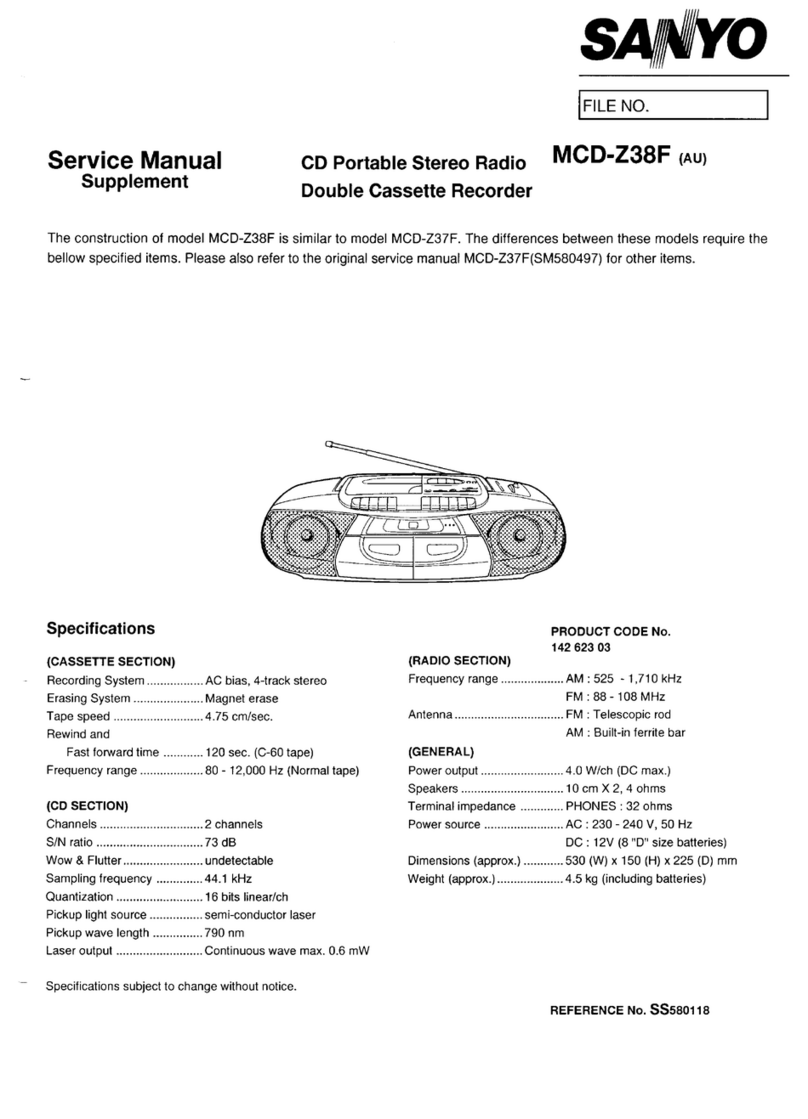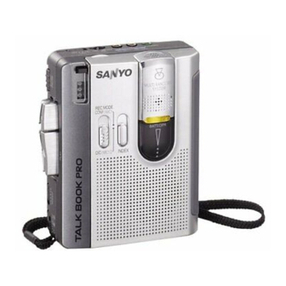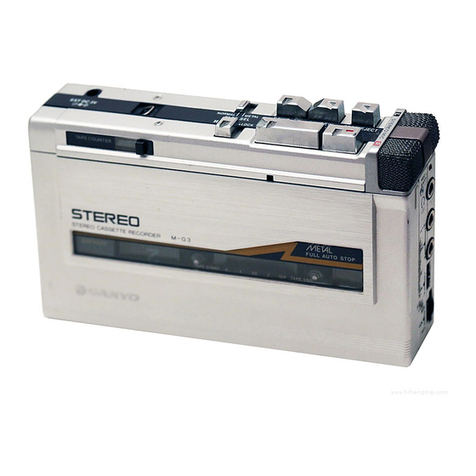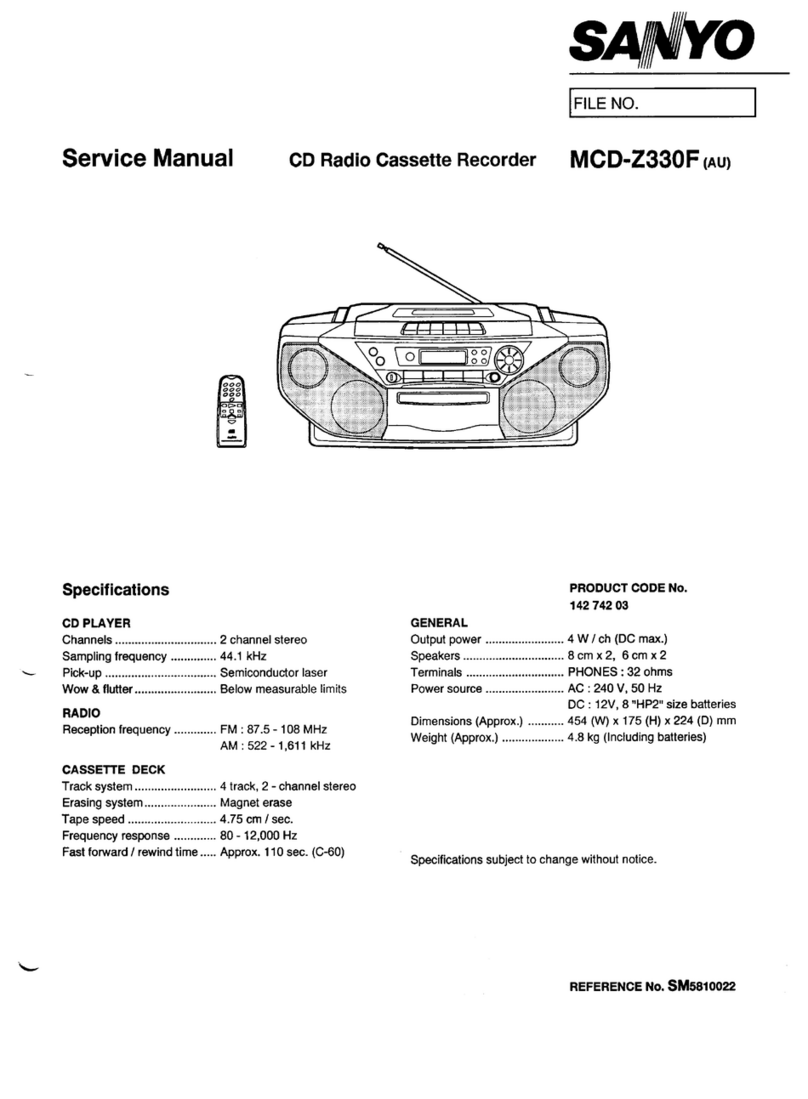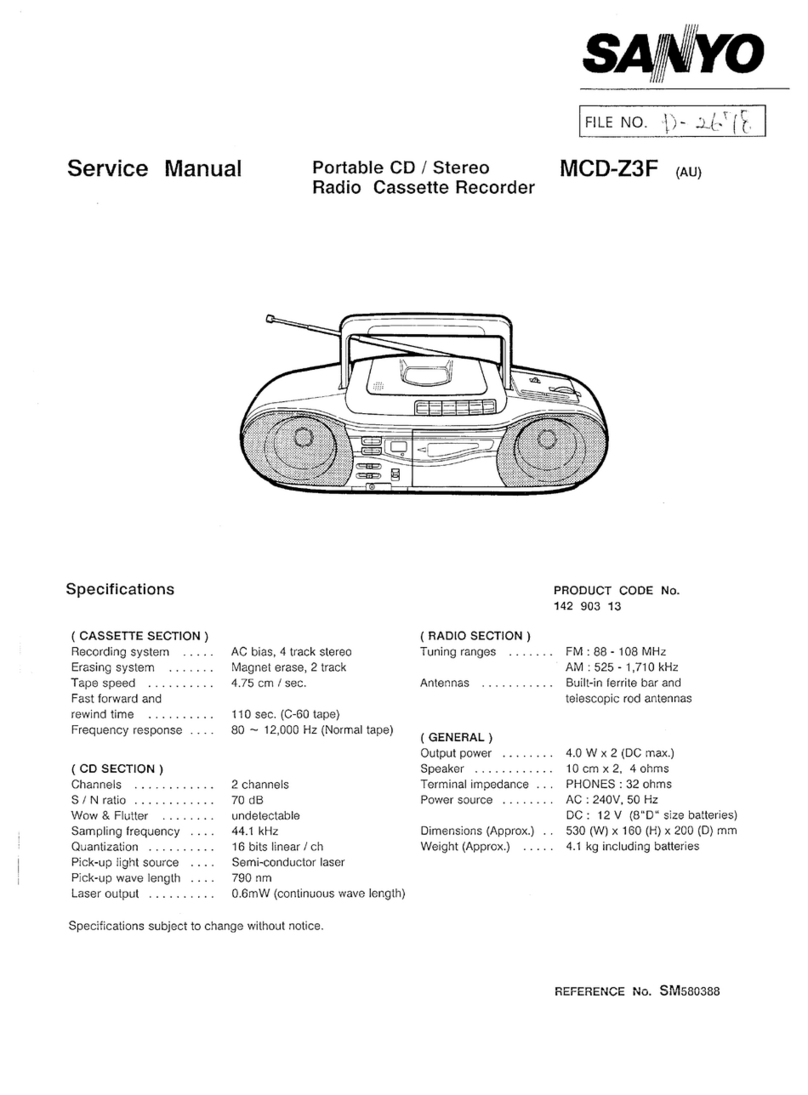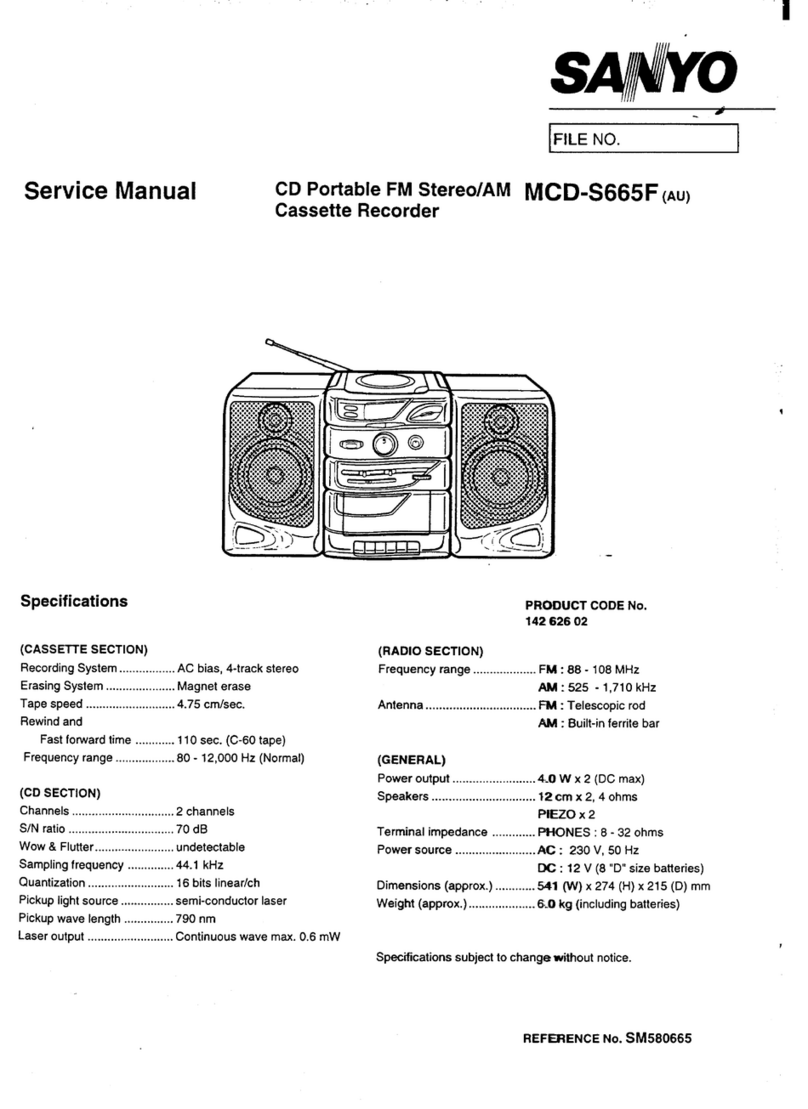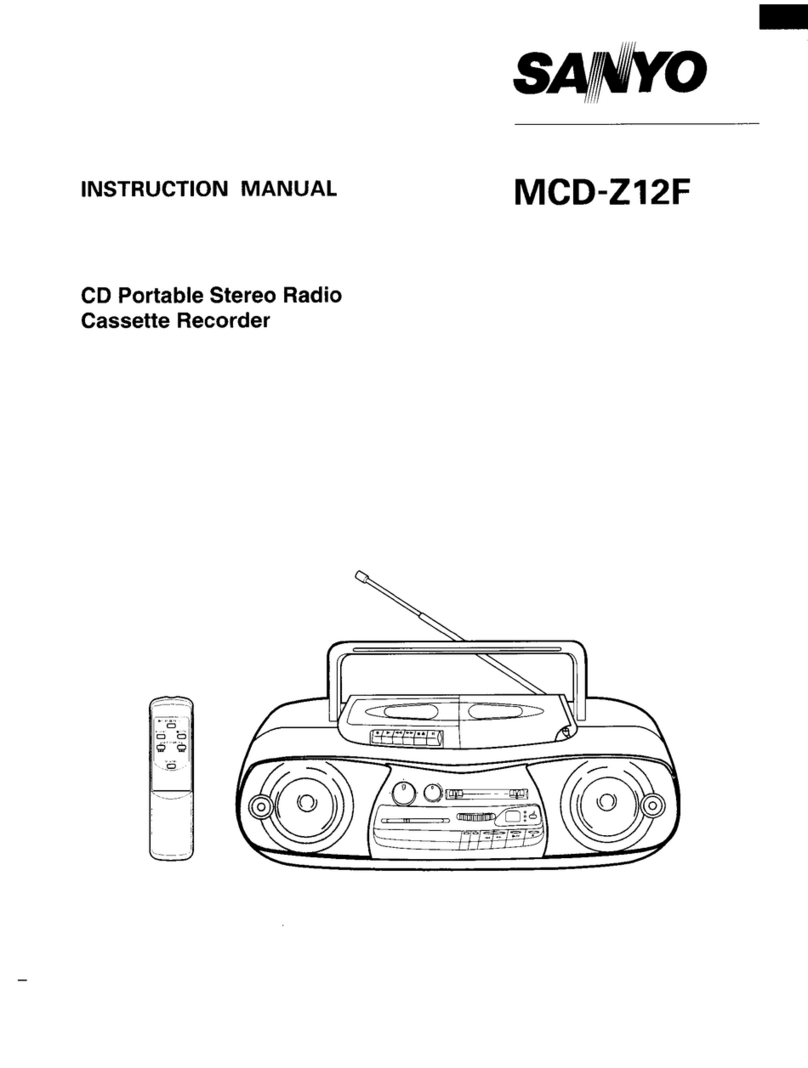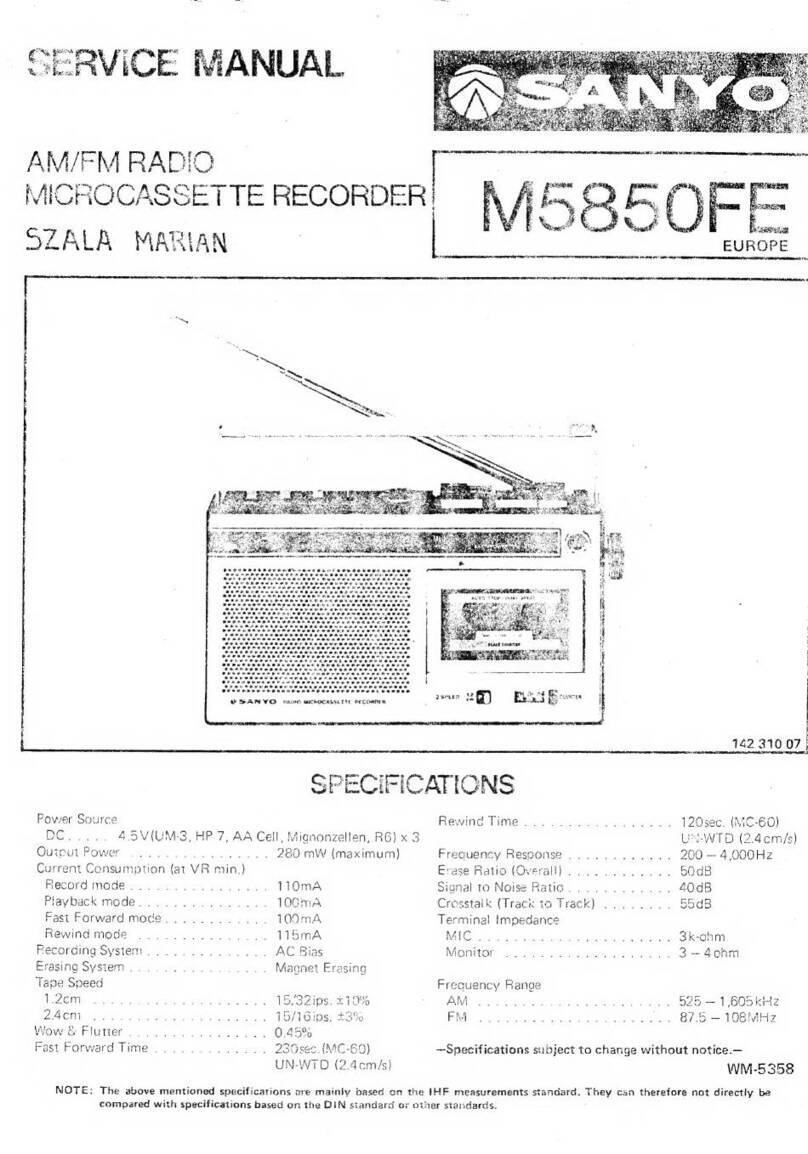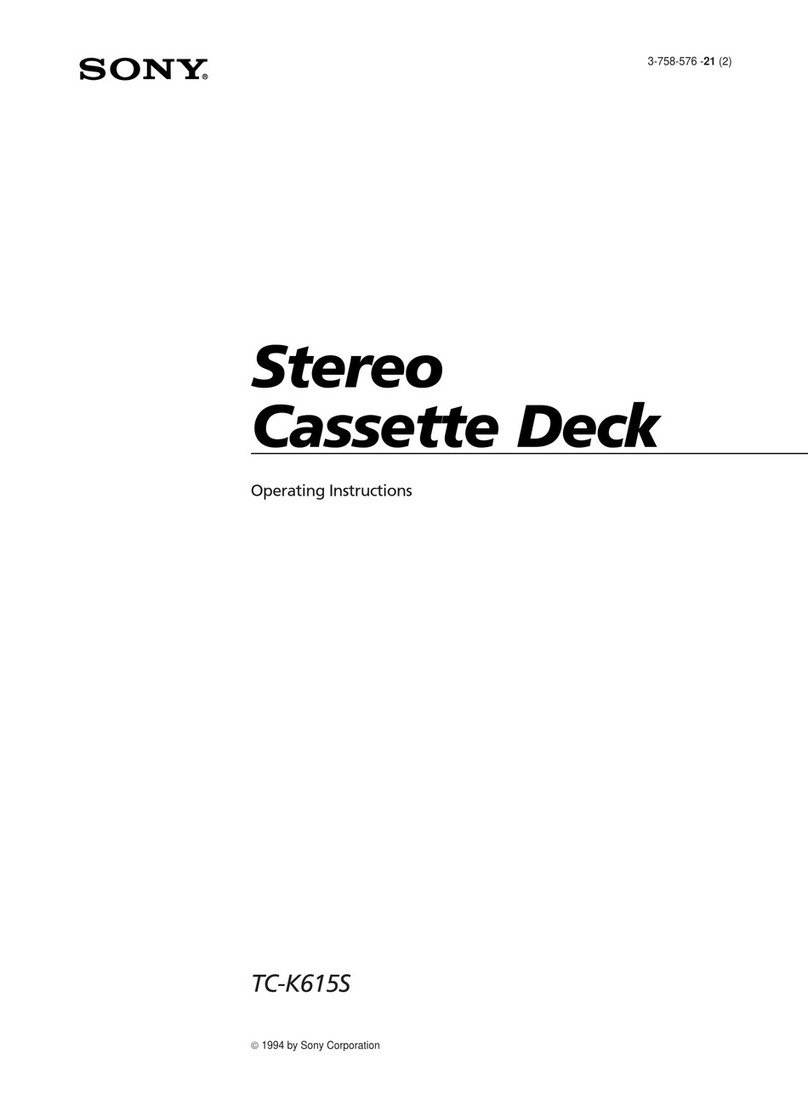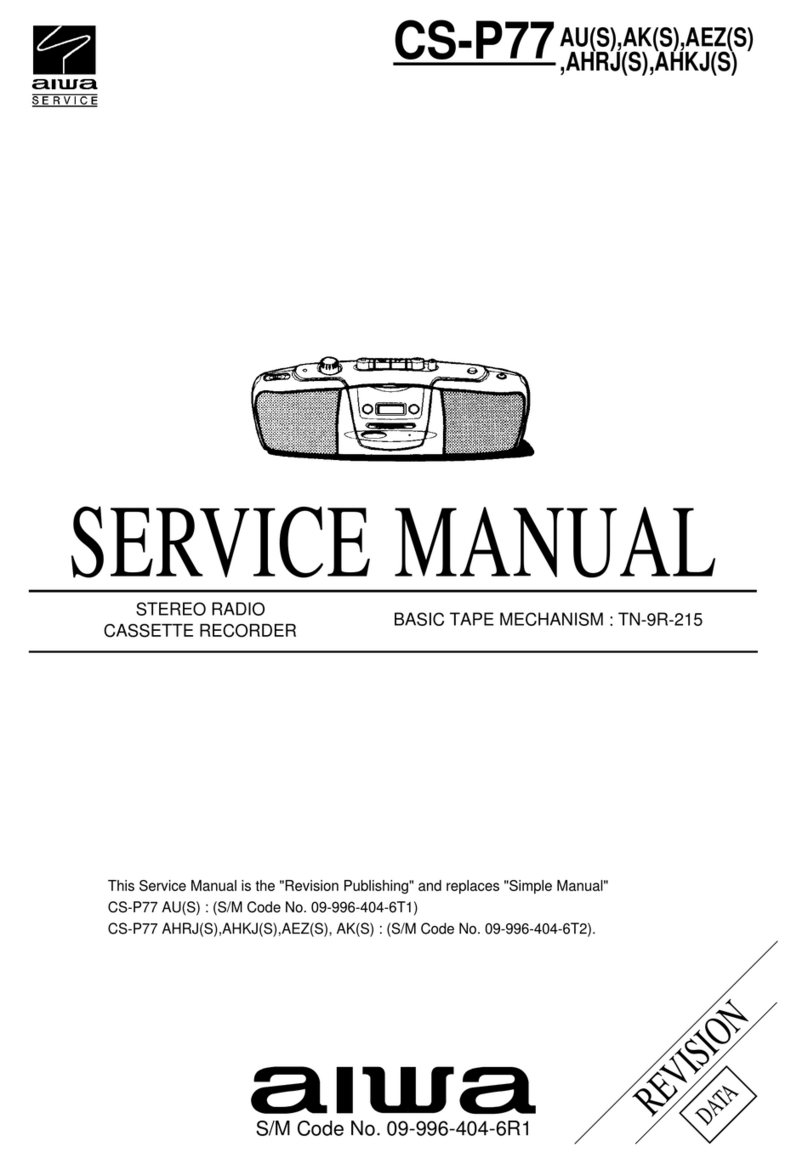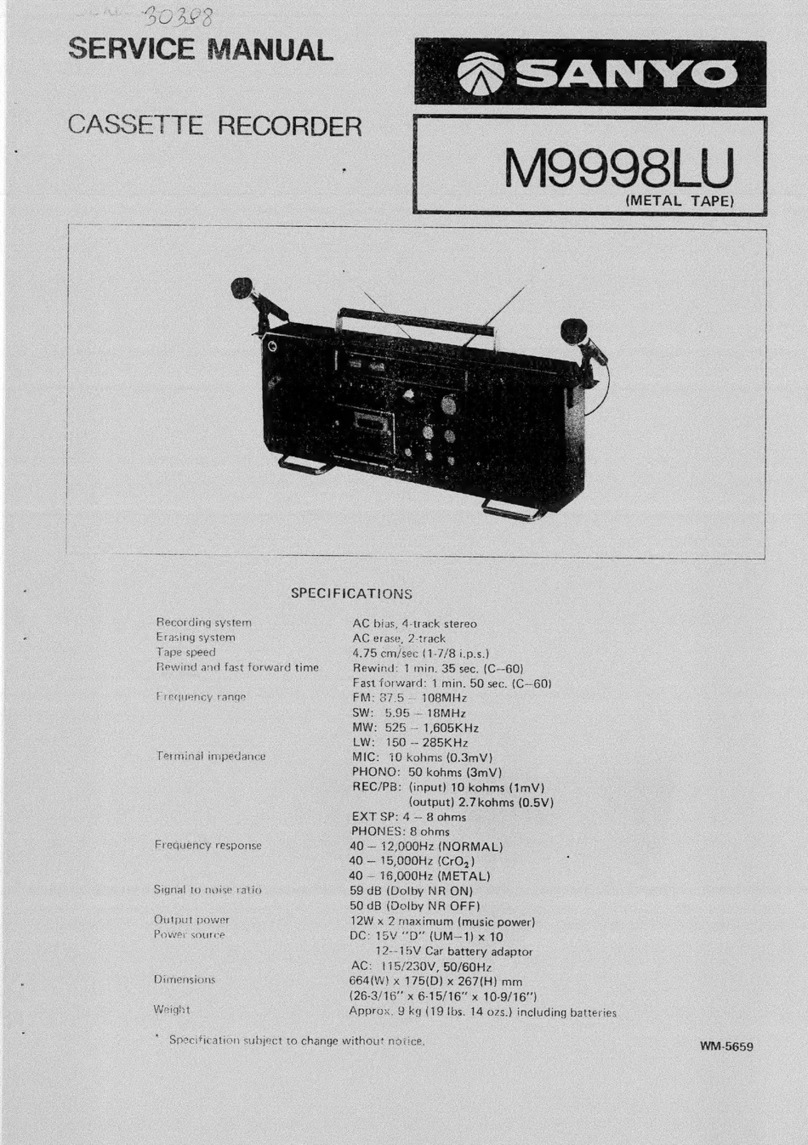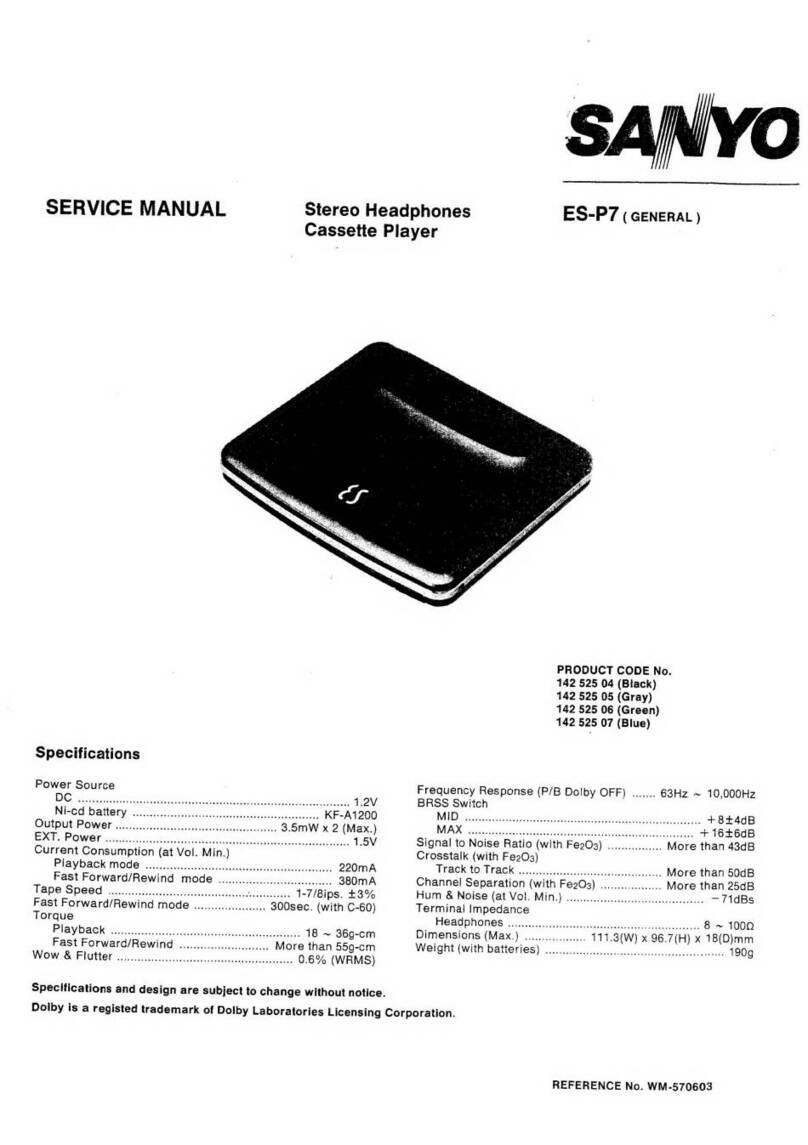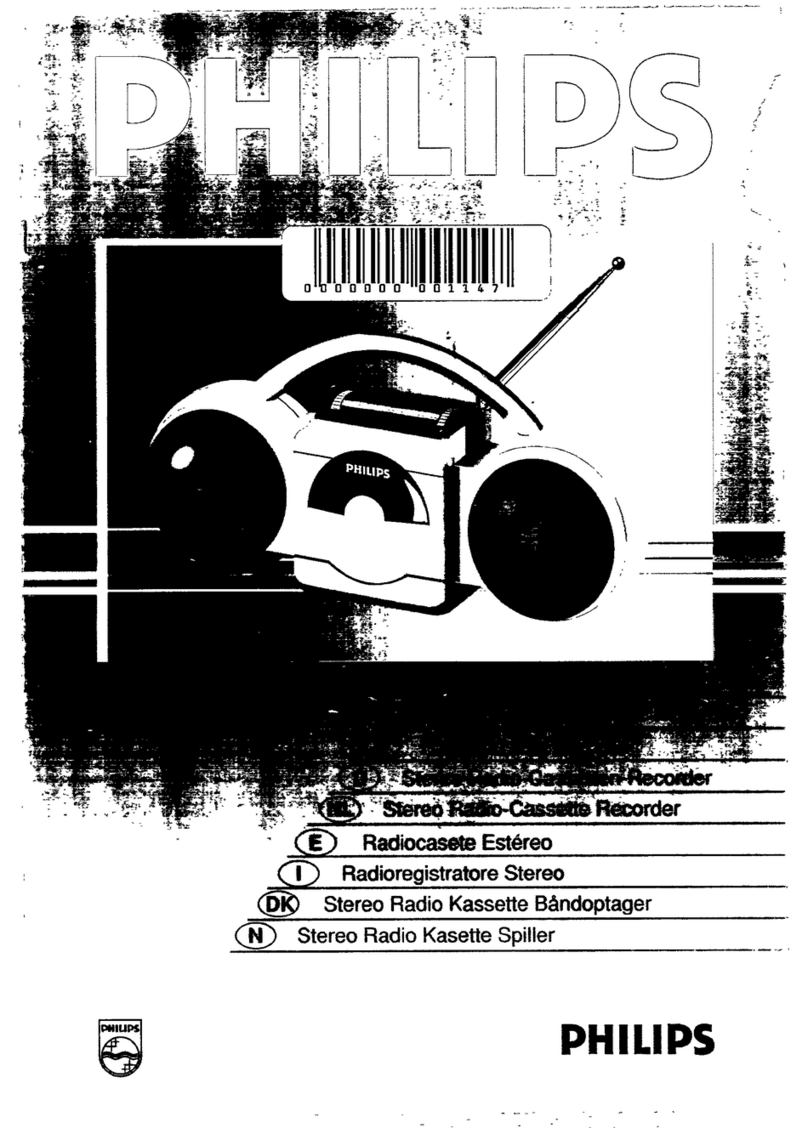Notes on handling compact discs
Fingerprints and dust should be carefully wiped off
the signal surface of the disc (glossy side) with asoft
cloth. Wipe in astraight motion from the centre to
the outside of the disc.
-Never use chemicals such as record cleaning sprays,
antistatic sprays or fluids, benzine orthinnerto clean
compact discs. These chemicals will permanently
damage the plastic surface of the disc.
Always place the compact disc in the disc tray with
the Iabelfacing upward. Compact discs can be played
on only one side.
-To remove adisc from its storage case, press down
on the centre of the case and Iiftthe disc out, holding
it carefully by the edges.
Discs should be returned to their cases after use to
protect them from dust and scratches.
To prevent warping the disc, do not expose it to
direct sunlight, high humidity or high temperatures
for extended periods of time. - - -
Do not apply paper or write anything on the disc
surface. Sharp writing instruments, or the inks used
in some felt-tip pens, may damage the surfaces of
the disc. . . .
Temporarily stopping play
Press the PLAY/PAUSE button. “D” blinks on the dis-
play. To resume play, press the button again.
Skip play
To skip to track 6while track 3is playing, press the
F~/ -F1 CD TRACK button repeatedly until “6” appears
in the TRACK section on the display. —.- ..
To skip back to track 3while track 6is playing, press
the I++/++ CD TRACK button repeatedly until “3”
appears.
Search (forward/reverse)
If the 14+/4+ or ➤>/FNCD TRACK button is pressed
and held during play, the player will search at high
speed in the forward or reverse direction. When the
button is released, normal play will continue.
Random play
Press the RANDOM button on the remote control to
begin random play. The player will automatically select
and play tracks on the disc at random. “RANDOM”
appears on the display.
-If the RANDOM button is pressed during random
play, the player will select the next random track.
Repeat play
Press the REPEAT button during play. The player will
play all tracks or all programmed tracks repeatedly. If
RANDOM Play is selected, all tracks will be repeated at
random. “REPEAT” appears on the display. To cancel
repeat play, press the REPEAT button again. “REPEAT”
disappears.
PROGRANINIED PLAY
Up to 24 selections on a disc can be programmed for
play in any order.
-The tracks must be programmed in the stop mode.
-Thesametrackcan be programmed more than once.
Example:
TO programme tracks 5,2,6 and 10
1. Press the MEMORY button.
dPr.1
2. Select track 5by pressing the E>/>H CD TRACK
button 4times.
[I
-1&Q Pr.1
IJ
3. %ss the MEMORY button. “PROG.” remains lit.
4. Select track 2by pressing the 14+/4+ CD TRACK
button 3timres.
II
1I
5. Press the MEMORY button. “PROG.” remains lit.
6. F%ogramme the remaining tracks in the same way.
7. Ress the PLAY/PAUSE button to start play.
I1
1J
-en all programmed selections have played, the
*er stops automatically.
The programme contents are retained in
memory.
~maximum number of selections that can be
~grammed is 24. If you try to enter more selec-
ttins, the programme details for the first selected
track appear on the display.
The programme is cleared in the following cases:
When the STOP button is pressed in the stop
nx$de. When the OPEN/CLOSE button is pressed.
Cf’iezS5ng the programme
EacFs time the MEMORY button is pressed in the stop
mod= the programmed details sequentially appear on
the cBZsplay.
Cha~-ng aprogramme
To add a new selection to aprogramme:
1. Irxthe stop mode, press the MEMORY button repeat-
E=MY until “-- –.--” is displayed.
2. act atrack number.
3. -s the MEMORY button.
To daamge aselection:
1. lm~e stop mode, press the MEMORY button repeat-
edly until the selection to be replaced is displayed.
2. ~t atrack number.
3. ~the MEMORY button.
NOTE
Pro~med selections cannot be erased individually.
-6-
